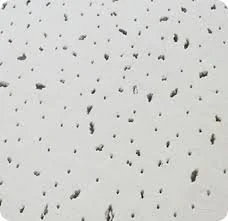- Afrikaans
- Albanian
- Amharic
- Arabic
- Armenian
- Azerbaijani
- Basque
- Belarusian
- Bengali
- Bosnian
- Bulgarian
- Catalan
- Cebuano
- Corsican
- Croatian
- Czech
- Danish
- Dutch
- English
- Esperanto
- Estonian
- French
- German
- Greek
- Hindi
- Indonesian
- irish
- Italian
- Japanese
- Korean
- Lao
- Malay
- Myanmar
- Norwegian
- Norwegian
- Polish
- Portuguese
- Romanian
- Russian
- Serbian
- Spanish
- Swedish
- Thai
- Turkish
- Ukrainian
- Uzbek
- Vietnamese
12月 . 13, 2024 21:07 Back to list
Specification Guidelines for Mineral Fiber Ceiling Products and Applications
Understanding Mineral Fiber Ceiling Specifications
Mineral fiber ceilings have gained immense popularity in both residential and commercial construction due to their exceptional acoustic properties, thermal insulation, and fire resistance. When contemplating the installation of a mineral fiber ceiling, it's essential to understand its specifications to ensure optimal performance and compliance with building codes.
What is Mineral Fiber?
Mineral fiber, primarily made from natural or synthetic minerals, is utilized in the production of ceiling tiles and panels. This material typically includes a blend of reclaimed materials, making it an eco-friendly choice. The most common types of mineral fiber ceilings are glass wool, rock wool, and fiberboard, each offering a unique set of characteristics while adhering to stringent building standards.
Key Specifications
1. Acoustic Performance One of the primary advantages of mineral fiber ceilings is their excellent sound-absorbing qualities. The Noise Reduction Coefficient (NRC) measures the amount of sound absorbed by a ceiling material. A higher NRC value, typically between 0.6 to 0.9 for mineral fiber ceilings, indicates better sound absorption. It’s crucial to select products that meet acoustic requirements based on the intended use of the space—be it offices, classrooms, or auditoriums.
mineral fiber ceiling specification

2. Fire Resistance Fire safety is a vital consideration in any construction project. Mineral fiber ceilings are generally classified as non-combustible or Class A rated, which means they offer a high degree of fire resistance. This classification complies with various fire safety regulations and standards, such as ASTM E84, which evaluates flame spread and smoke development. Ensure that the ceiling tiles you choose have the appropriate fire rating, especially in areas where fire codes are stringent.
3. Thermal Insulation Beyond sound and fire performance, thermal insulation is another essential specification. Mineral fiber ceilings can help maintain indoor temperatures, leading to energy efficiency and increased comfort. The thermal resistance (R-value) of a mineral fiber ceiling will vary based on its thickness and density. When selecting materials, consider the local climate and the specific thermal insulation needs of the building.
4. Moisture Resistance In areas susceptible to moisture, such as bathrooms and kitchens, it is crucial to choose mineral fiber ceilings that offer enhanced moisture resistance. Manufacturers often specify the ceiling’s humidity resistance and mold growth prevention capability. Look for products that are treated to withstand high humidity to prevent degradation and maintain aesthetic appeal over time.
5. Sustainability Sustainability is an increasingly important specification for modern construction materials. Many mineral fiber ceilings are made from recycled content and are recyclable themselves. This not only contributes to LEED certification points but also reduces overall environmental impact. When selecting materials, checking certifications like GREENGUARD and other eco-labels can ensure that you’re making a responsible choice.
Conclusion
In summary, understanding mineral fiber ceiling specifications is integral to making informed decisions in construction and renovation projects. From acoustic performance to fire safety, thermal insulation, moisture resistance, and sustainability, thorough consideration of these factors will ensure that the chosen ceiling system meets the specific needs of the space while adhering to industry standards. Investing time in evaluating product specifications can lead to long-term benefits, including improved energy efficiency, enhanced comfort levels, and compliance with safety regulations, ultimately creating healthier and more productive indoor environments.
-
Transform Interiors with PVC Gypsum Ceiling: A Stylish, Durable, and Moisture-Resistant SolutionNewsMay.19,2025
-
The Smart Interior Upgrade: Discover the Durability and Versatility of Gypsum Ceiling Access Panel SolutionsNewsMay.19,2025
-
The Smart Choice for Interior Design: Discover the Value of PVC Gypsum Ceiling SolutionsNewsMay.19,2025
-
Mineral Fiber Ceiling Tiles: The Smart Blend of Performance and AestheticsNewsMay.19,2025
-
Mineral Fiber Ceiling Tiles: The Superior Choice Over Gypsum for Sound and Fire SafetyNewsMay.19,2025
-
Mineral Fiber Ceiling Tiles: Eco-Friendly Strength and Style for Every CeilingNewsMay.19,2025







